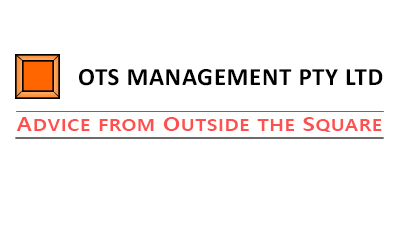In tight economic times, small business owners can be tempted to retreat into their shell.
To get through tough times, small business owners look at cost savings, financial controls and cutting expenditure. However if this is done in isolation, that is, if you rush to control costs without also looking at the top line, your bottom line will shrink anyway!
Counter-intuitive as it is for small business owners in a period of financial slow-down, small businesses must continue marketing efforts and not look to cut these as if they were discretionary costs.
“Marketing” is not just “advertising” which is what small business owners think when they think of marketing. In fact, advertising may be your least effective marketing cost in a shrinking economy. The important thing is to get a good rate of return for your marketing dollar and you get this by implementing effective marketing techniques.
Effective marketing is the type of marketing that gets your name out there with its “brand” attached in the most cost-effective way. This can be added-value service, it can be increased contact with customers – this type of marketing can include less-cost or no-cost vehicles.
Direct marketing is not necessarily no-cost but a large part of the effort can be at low cost. It is an effective means of keeping your name open to customers, established and new, and it can be measurable.
Direct marketing is defined as a promotional method that involves presenting information about your company, product, or service directly to your target customer, rather than through advertising channels. It is a targeted form of marketing that presents information of potential interest to a consumer that has been determined to be a likely buyer.
Direct marketing may involve sending out emails to an email list; letters to your database; cold-calls to potential customers; or setting up of meetings directly.
There are four keys in a successful direct marketing campaign.
First is timing. When should you do it? You need to consider what exactly you want to market and then target the right time depending on your target market. For example, if you were a financial planner with a loan brokerage arm, you can direct market at least three aspects of your business – refinancing client loans, reviewing longer-term investment objectives to see if they are still relevant today, and reviewing insurances to cover spouses should the worst happen. All three can be timed now – your target market, worried about how they are dealing with their existing loans or if their retirement plans are still valid, would wake up if directly approached on these offerings. However, you would not market your new loan services right now – keep them and time them for when the market turns and people look forward to borrowing again.
The second key is to phrase the offer well. Do you know what is the difference between your sales proposition and your offer? Again you need to examine your target market to see what offers appeal to them today. For example, house builders need to offer value-added services. Their sales propositions about “being the best” or “guaranteeing their work personally” are less important today. They can rephrase their offer to include items or services that people in a value-for-money frame of mind want today such as included floor-coverings and window treatments.
The third key is the look and feel of your direct contact. Should it be a mail-out? A letterbox drop in a specific area? How about via a social networking website? Direct e-mail? Guess what – again, look at your target market. Then, you need to consider the format of the direct mail – it should be targeted at the people you are trying to reach, not a general advertisement format.
The final, fourth key to successful direct marketing campaigns is the database. How should you segment your market? How should you pitch offers and layouts to different markets? What are the expected response rates, and what systems do you have in place to receive interest as well as follow up?
I have been at the receiving end of a direct mail campaign which dealt with the first three keys really well and attracted me to the product. But then when I called to follow up, I was greeted by a receptionist who had no idea what I was talking about! Talk about brand destruction.
So in summary – don’t sacrifice effective marketing to cost-cutting. Think about what you want to say, who you want to say it to, and get out there. As your competition cut costs, your opportunities beckon.




